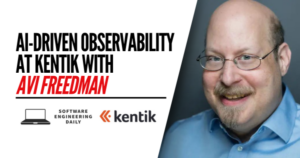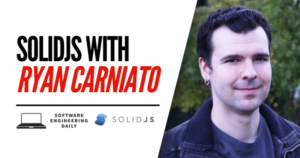Google BeyondCorp with Max Saltonstall
Podcast: Play in new window | Download
Subscribe: RSS


Employees often find themselves needing to do work outside of the office.
Depending on the sensitivity of your task, accessing internal systems from a remote location may or may not be OK. If you are using a corporate application that shows the menu of your company’s cafe on your smartphone, your workload is less sensitive. If you are accessing the proprietary codebase of your company’s search engine, your workload is more sensitive.
As Google grew in headcount, the different cases of employees logging in from different places grew as well. Google developed a fine-grained, adaptive security model called BeyondCorp to allow for a wide variety of use cases. Whether you are an engineer logging in from a Starbucks or a human resources employee logging in from your desk, the BeyondCorp system uses the same access proxy to determine your permissions.
The BeyondCorp architecture is also built around the assumption of a zero-trust network. A zero-trust network is a modern enterprise security architecture where internal servers do not trust each other.
Zero-trust networks assume that the network has already been breached. If you are writing an internal application, your default assumption should be to distrust an incoming request from someone else on the network.
The zero-trust model is in contrast to an outdated model of enterprise security–that of the hard outer defense of a firewall, that purports to prevent attackers from ever making their way into the vulnerable inside of a network. The firewall model assumes that all of these servers within the firewall can trust each other.
Several papers have come out of Google discussing the BeyondCorp security model. These papers describe the network architecture, and the security philosophies of BeyondCorp.
Since the release of these papers, an ecosystem of security providers has sprung up to provide implementation services for companies that want BeyondCorp security in their enterprise. Google has also productized its BeyondCorp system with an identity-aware proxy that is tied into their Google Cloud product.
Max Saltonstall is the technical director of information technology in the office of the CTO at Google, where he has helped to facilitate the widespread adoption of the BeyondCorp program. In this episode, we talk about enterprise security–from remote employee access to zero-trust networks. We also talk about implementing the BeyondCorp model–why enterprises should consider it, and how to do it.
We have done lots of past shows about security–from car hacking to smart contract vulnerabilities to discussions with luminaries like Bruce Schneier and Peter Warren Singer. To find all of our episodes about security, download the Software Engineering Daily app for iOS or Android. These apps have all 650 of our episodes in a searchable format–we have recommendations, categories, related links, and discussions around the episodes. It’s all free and also open source–if you are interested in getting involved in our open source community, we have lots of people working on the project and we do our best to be friendly and inviting to new people coming in looking for their first open source project. You can find that project at Github.com/softwareengineeringdaily
Transcript
Transcript provided by We Edit Podcasts. Software Engineering Daily listeners can go to weeditpodcasts.com/sed to get 20% off the first two months of audio editing and transcription services. Thanks to We Edit Podcasts for partnering with SE Daily. Please click here to view this show’s transcript.



















